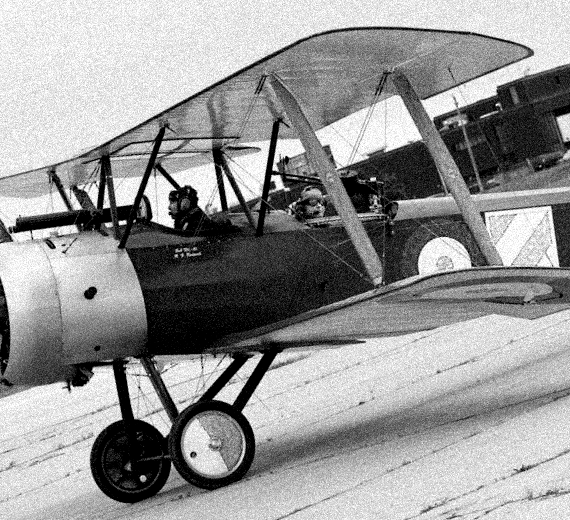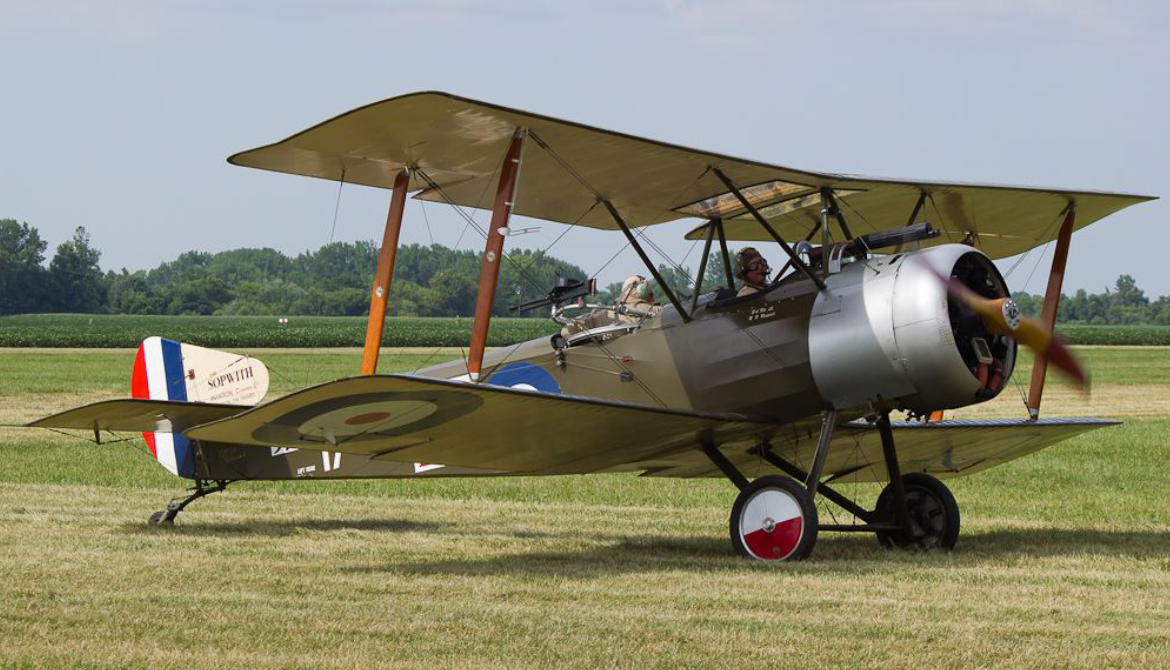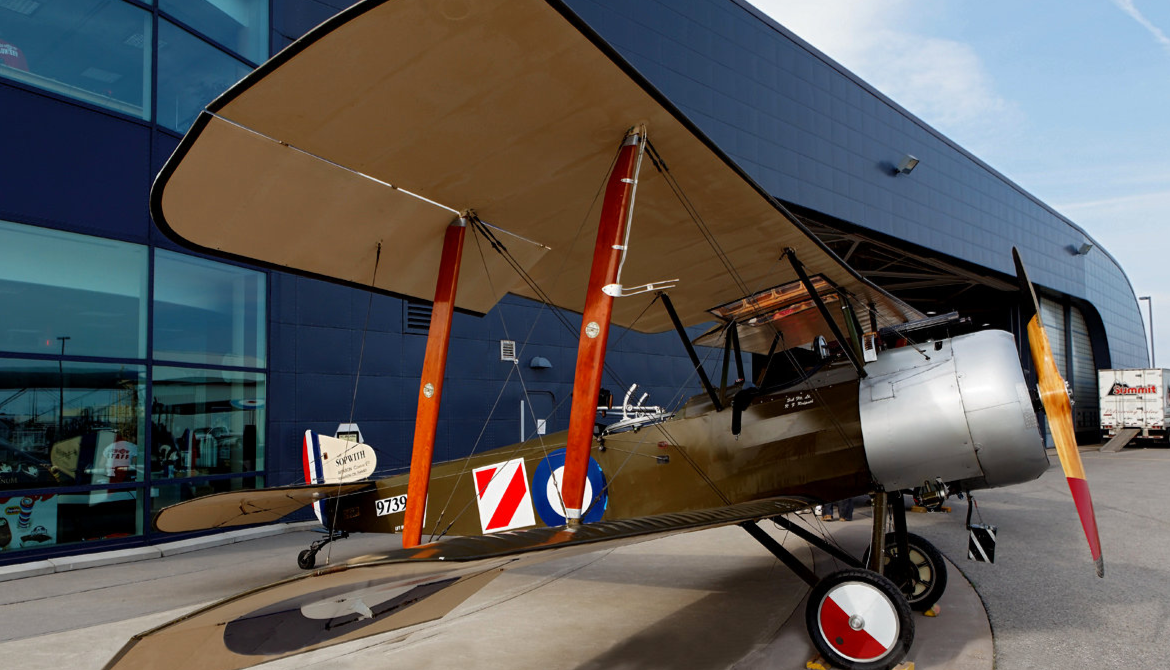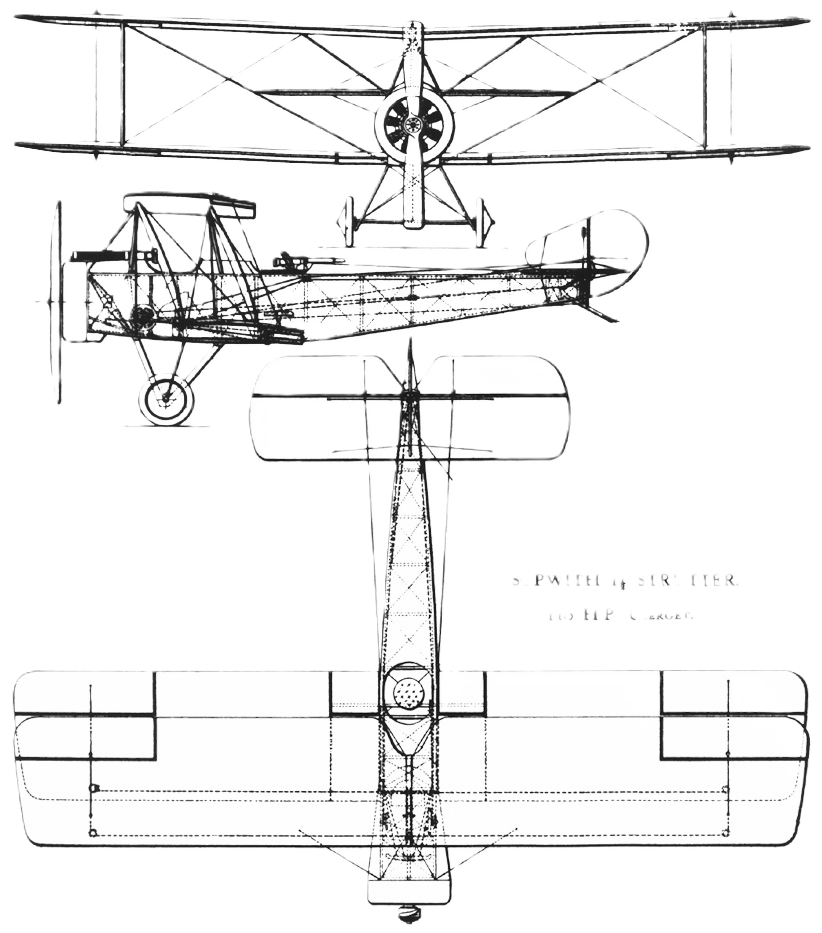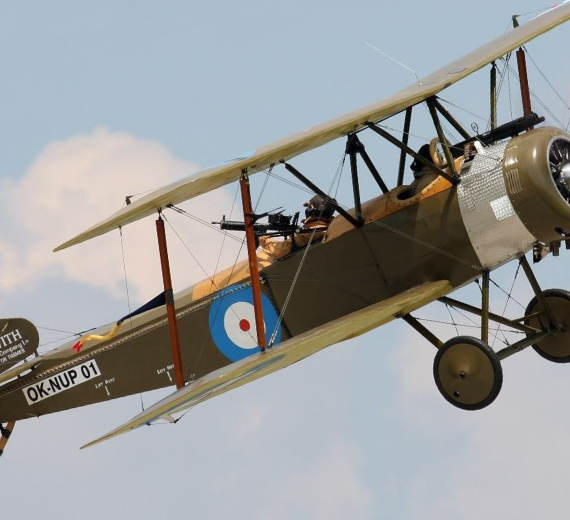Sopwith Aviation
Sopwith 1+1⁄2 Strutter
 |
|
| Role | Biplane general purpose aircraft |
|---|---|
| National origin | United Kingdom |
| Manufacturer | Sopwith Aviation Company |
| First flight | December 1915 |
| Introduction | April 1916 |
| Primary users | Royal Naval Air Service Royal Flying Corps Aéronautique Militaire |
| Number built | 4,500 France1,439 Great Britain |
.
History Sopwith Aviation Company
Sopwith 1+1⁄2 Strutter

The Sopwith 1+1⁄2 Strutter is a British single- or two-seat multi-role biplane aircraft of the First World War. It was the first British two-seat tractor fighter and the first British aircraft to enter service with a synchronised machine gun. It was given the name 1+1⁄2 Strutter because of the long and short cabane struts that supported the top wing. The type was operated by both British air services and was in widespread but lacklustre service with the French Aéronautique Militaire.
In other foreign service

Three Belgian squadrons also flew French-built Sopwiths, and surplus French Sopwiths were used by several countries postwar. During the war, several 1+1⁄2 Strutters that were interned after landing in the Netherlands were purchased for the Dutch Luchvaart Afdeeling.
Development

In December 1914, the Sopwith Aviation Company designed a small, two-seat biplane powered by an 80 hp (60 kW) Gnome rotary engine, which became known as the "Sigrist Bus" after Fred Sigrist, the Sopwith works manager. The Sigrist Bus first flew on 5 June 1915 and although it set a new British altitude record on the day of its first flight, only one was built, serving as a company runabout
0
KmCeiling
0
HrEndurance
0
Km/hAircraft Speed
0
Max Crew
Photo Gallery
Sopwith Aviation Company
Sopwith 1+1⁄2 Strutter


Sopwith Aviation Company
Sopwith 1+1⁄2 Strutter
General Info
-
-
-
- Crew: 2
- Length: 25 ft 3 in (7.70 m)
- Wingspan: 33 ft 6 in (10.21 m)
- Height: 10 ft 3 in (3.12 m)
- Wing area: 346 sq ft (32.1 m2)
-
-
Powerplant
-
-
- Empty weight: 1,305 lb (592 kg)
- Gross weight: 2,149 lb (975 kg)
- Max takeoff weight: 2,154 lb (977 kg)
- Powerplant: 1 × Clerget 9B 9-cylinder air-cooled rotary piston engine, 130 hp (97 kW)
-
Performance
-
- Maximum speed: 100 mph (160 km/h, 87 kn) at 6,500 ft (1,981 m)
- Endurance: 3 hours 45 minutes
- Service ceiling: 15,500 ft (4,700 m)
- Time to altitude: 6,500 ft (1,981 m) in 9 minutes 10 seconds
Related development
-
-
- Guns: ** 1 × .303 in (7.7 mm) forward-firing synchronised Vickers machine gun
- 1 × .303 in (7.7 mm) Lewis gun in observer's cockpit
- Bombs: Up to 130 lb (60 kg) bombs
- Guns: ** 1 × .303 in (7.7 mm) forward-firing synchronised Vickers machine gun
-
.
Links to Youtube & Others
Three Belgian squadrons also flew French-built Sopwiths, and surplus French Sopwiths were used by several countries postwar. During the war, several 1+1⁄2 Strutters that were interned after landing in the Netherlands were purchased for the Dutch Luchvaart Afdeeling.
Sopwith Aviation Sopwith 1+1⁄2 Strutter
Like other early Sopwith types, the 1+1⁄2 Strutter was very lightly built and its structure did not stand up very well to arduous war service.
Youtube Link
It was still a useful long-range reconnaissance aircraft when it could be provided with adequate fighter escort but was one of the types to suffer severely during "Bloody April", 43.
